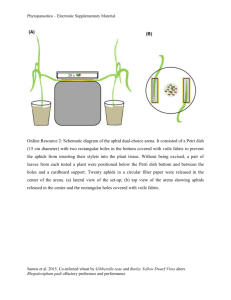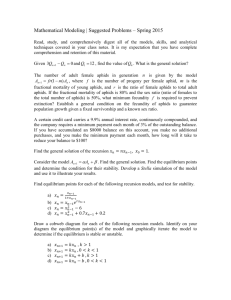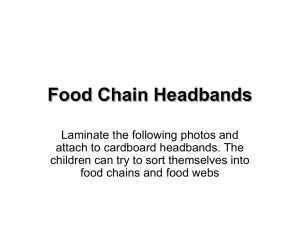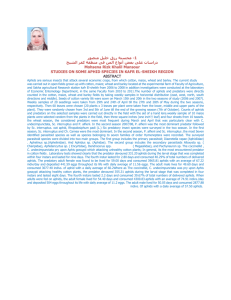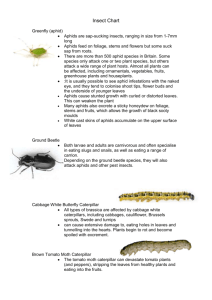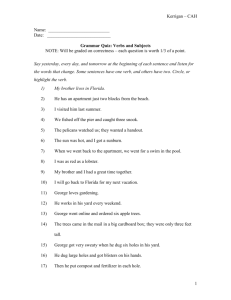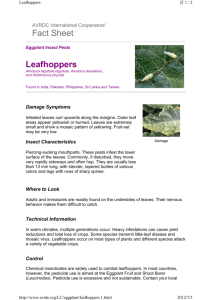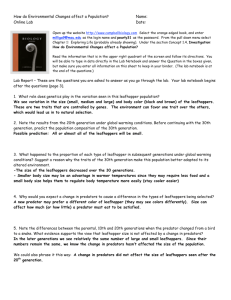Chapter 12 - Cornell Fruit
advertisement
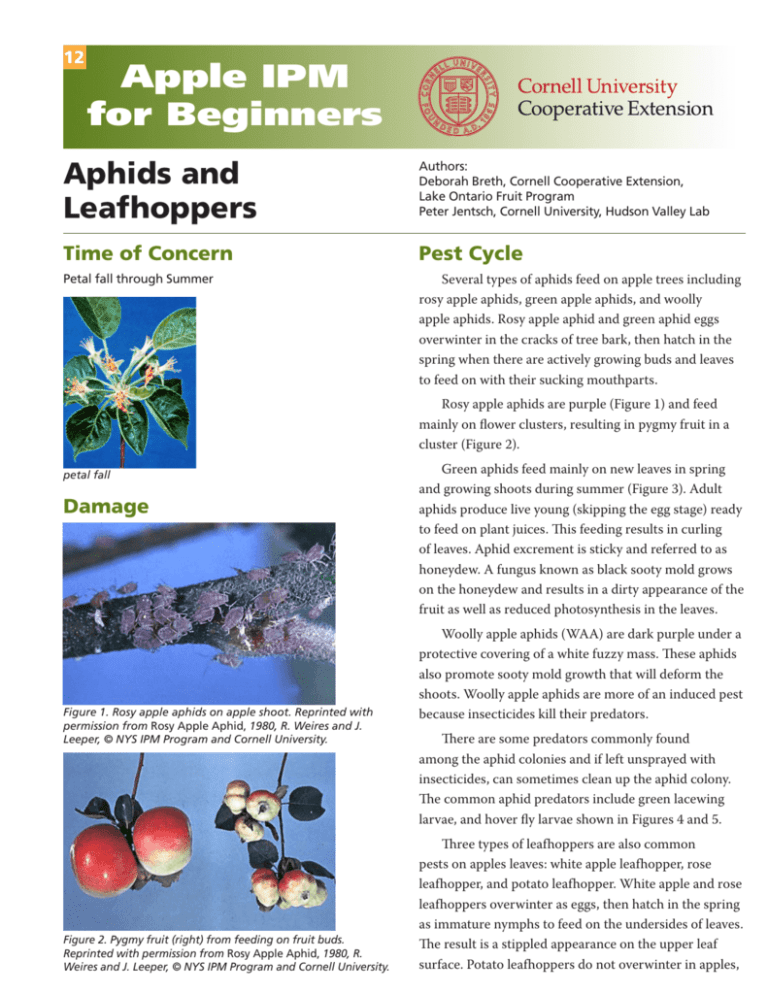
12 Apple IPM for Beginners Aphids and Leafhoppers Authors: Deborah Breth, Cornell Cooperative Extension, Lake Ontario Fruit Program Peter Jentsch, Cornell University, Hudson Valley Lab Time of Concern Pest Cycle Petal fall through Summer Several types of aphids feed on apple trees including rosy apple aphids, green apple aphids, and woolly apple aphids. Rosy apple aphid and green aphid eggs overwinter in the cracks of tree bark, then hatch in the spring when there are actively growing buds and leaves to feed on with their sucking mouthparts. Rosy apple aphids are purple (Figure 1) and feed mainly on flower clusters, resulting in pygmy fruit in a cluster (Figure 2). petal fall Damage Figure 1. Rosy apple aphids on apple shoot. Reprinted with permission from Rosy Apple Aphid, 1980, R. Weires and J. Leeper, © NYS IPM Program and Cornell University. Figure 2. Pygmy fruit (right) from feeding on fruit buds. Reprinted with permission from Rosy Apple Aphid, 1980, R. Weires and J. Leeper, © NYS IPM Program and Cornell University. Green aphids feed mainly on new leaves in spring and growing shoots during summer (Figure 3). Adult aphids produce live young (skipping the egg stage) ready to feed on plant juices. This feeding results in curling of leaves. Aphid excrement is sticky and referred to as honeydew. A fungus known as black sooty mold grows on the honeydew and results in a dirty appearance of the fruit as well as reduced photosynthesis in the leaves. Woolly apple aphids (WAA) are dark purple under a protective covering of a white fuzzy mass. These aphids also promote sooty mold growth that will deform the shoots. Woolly apple aphids are more of an induced pest because insecticides kill their predators. There are some predators commonly found among the aphid colonies and if left unsprayed with insecticides, can sometimes clean up the aphid colony. The common aphid predators include green lacewing larvae, and hover fly larvae shown in Figures 4 and 5. Three types of leafhoppers are also common pests on apples leaves: white apple leafhopper, rose leafhopper, and potato leafhopper. White apple and rose leafhoppers overwinter as eggs, then hatch in the spring as immature nymphs to feed on the undersides of leaves. The result is a stippled appearance on the upper leaf surface. Potato leafhoppers do not overwinter in apples, Damage, continued but are brought in by the jetstream from warmer states. Potato leafhoppers can be distinguished from other leafhoppers by their sideways motion, not back-and forth (Figure 6). Adults and nymphs feed on leaves and inject a toxin causing the leaf edge to curl downward and turn yellow (Figure 7). Potato leafhoppers can cause enough damage to stunt growth in young trees. It is worth noting that both aphids and leafhoppers build up populations quickly during hot, dry weather. Figure 3. Green apple aphids clustered on growing apple shoot. Photo: E. Tee. IPM Steps for Beginners 1. Young and dwarf trees are particularly susceptible to aphid and leafhopper damage. Starting in early June, scout trees every week, carefully looking at new shoots, and the underside of leaves. Larger trees may not need any treatment. 2. For leafhoppers, spray if you start seeing potato leafhopper nymphs in young trees —don’t wait for it to be severe. Figure 4. Green lacewings (resemble miniature alligators) feed on aphids and mites. Figure 5. Hover fly larvae feed on aphids. Photo: E. Tee. Figure 6. Potato leafhopper nymph walks sideways. 3. For aphids, randomly look at 50 rapidly growing shoots throughout the orchard. If 15-20 are infested with aphids, treat. OR, if 25 are infested, but at least 10 have predator insects working, don’t treat. Carbaryl is effective for control of some aphids and leafhoppers but only as long as the insecticide is present. Carbaryl (Sevin) will also kill beneficial insects. The use of systemic insecticides (imidacloprid) will protect the leaves from reestablishing aphid and leafhopper populations. Trees may need treatment on a 10-14 day schedule if, based on scouting results, potato leafhoppers continue to arrive. For other products, see the most recent version of the Cornell Fruit Guidelines. Figure 7. Potato leafhopper feeding turns leaf edges yellow and curled, stunting the shoots.
